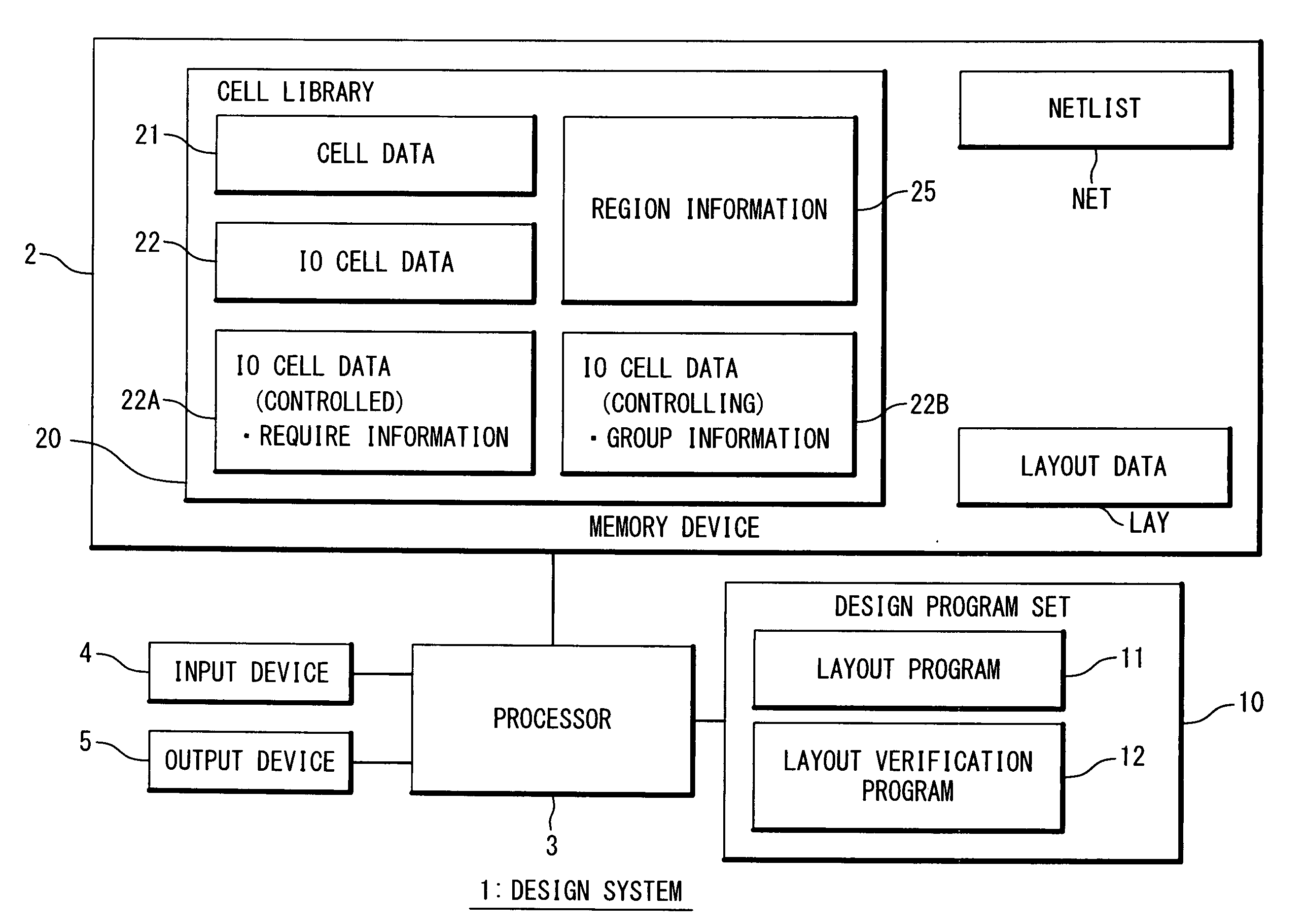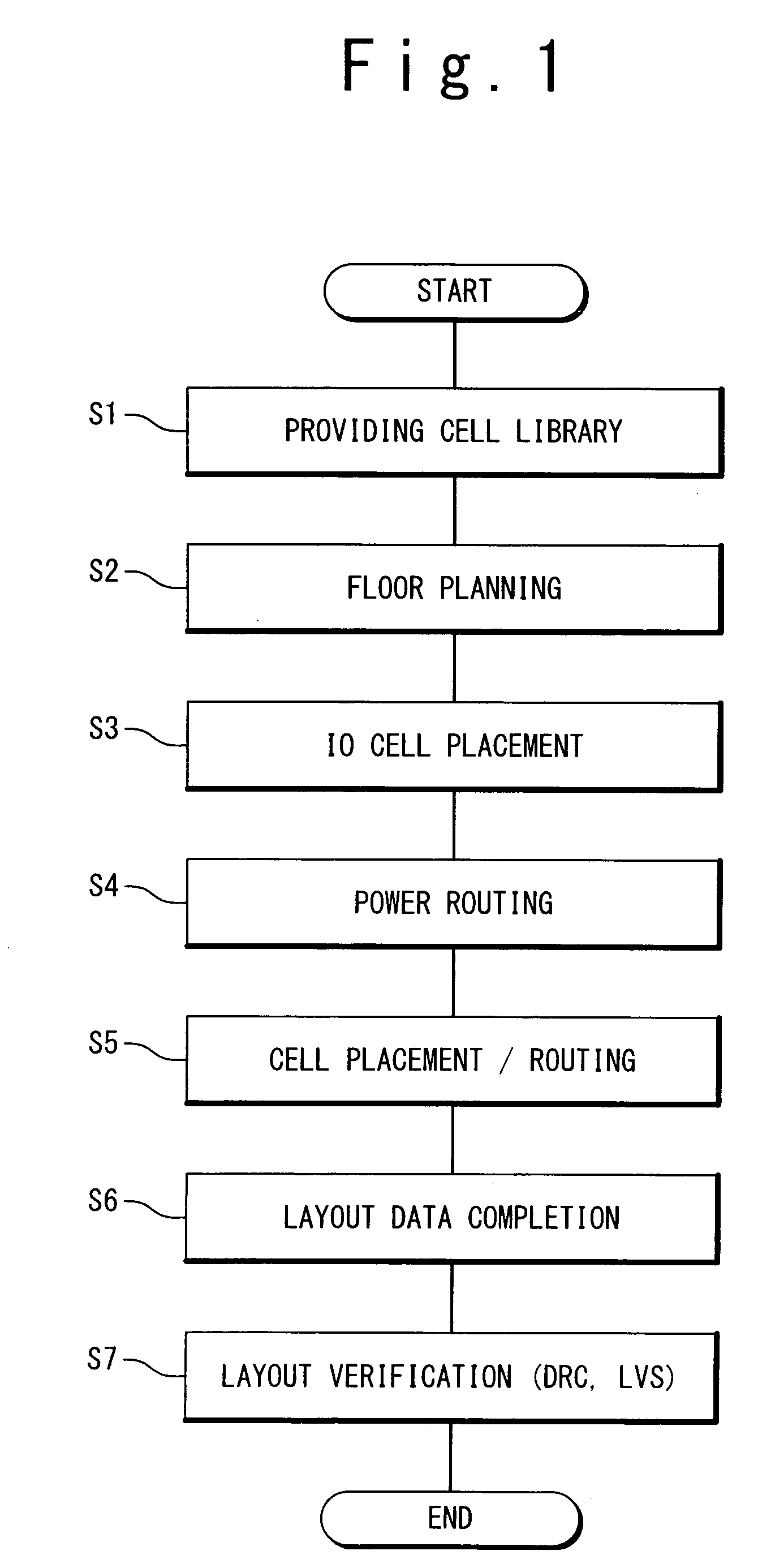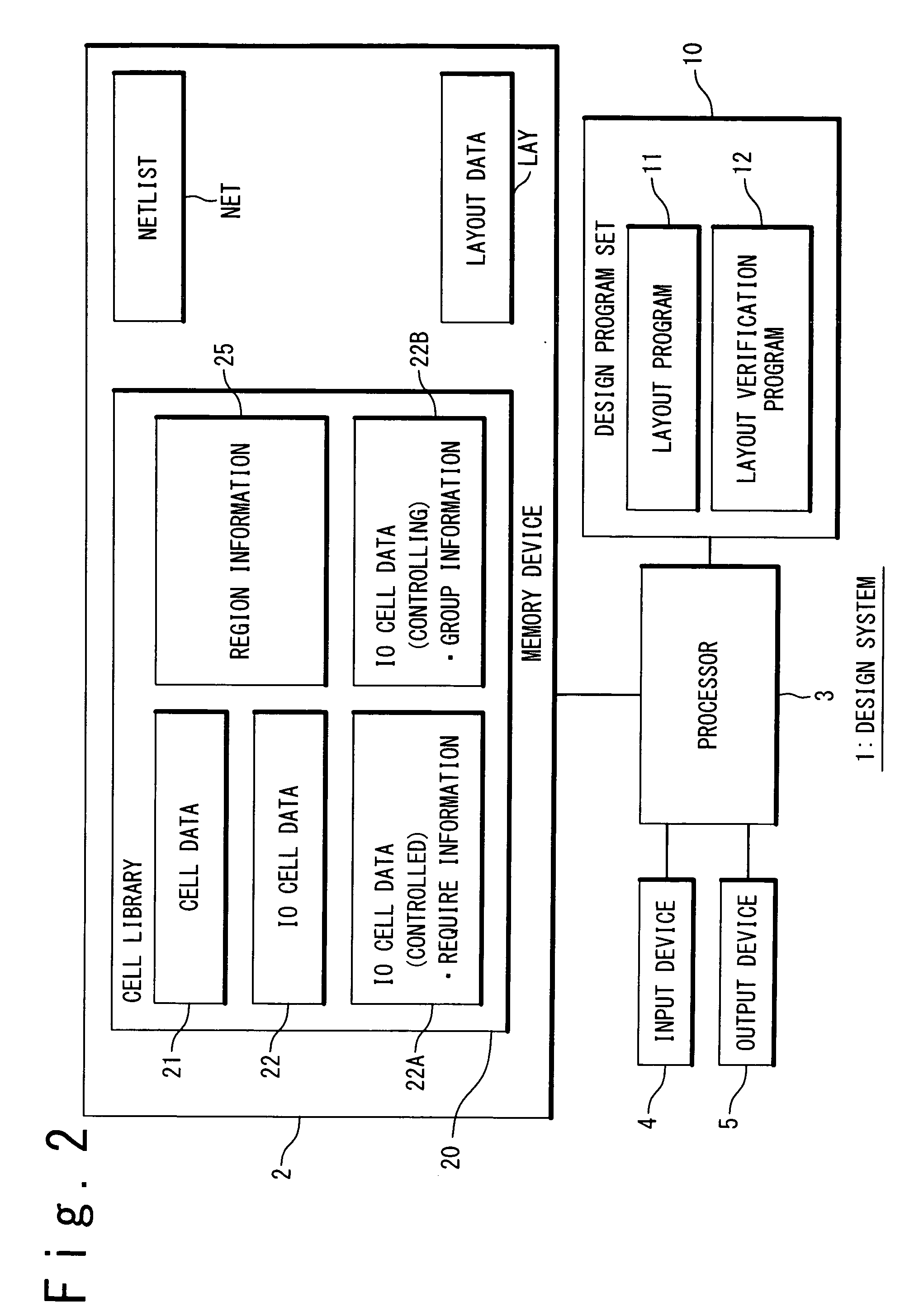Method of verifying semiconductor integrated circuit and design program
a technology of integrated circuit and design program, which is applied in the field of verification of semiconductor integrated circuits, can solve problems such as error detection, difficulty in performing lvs verification, and control cell failure to operate normally, and achieve the effects of preventing product deficiency caused by placement errors, reducing tat (turn around time), and improving production yield
- Summary
- Abstract
- Description
- Claims
- Application Information
AI Technical Summary
Benefits of technology
Problems solved by technology
Method used
Image
Examples
first embodiment
1. First Embodiment
1-1. Design System and Operation
[0041]FIG. 2 is a block diagram showing a configuration example of a design system 1 according to a first embodiment of the present invention. The design system 1 is achieved by a computer system and includes a memory device 2, a processor 3, an input device 4, an output device 5 and a design program set 10. The memory device 2 includes a RAM and an HDD. The processor 3 controls operations of respective devices and executes data processing. The input device 4 includes a key board and a mouse. The output device 5 includes a display.
[0042]The design program set 10 is software executed by the processor 3 and includes a layout program11 and a layout verification program 12. These programs 11 and 12 may be recorded on a computer-readable recording medium and read out from the recording medium to the memory device 2. The designing of a semiconductor integrated circuit according to the present embodiment is achieved by cooperation of the p...
second embodiment
2. Second Embodiment
[0081]In a second embodiment of the present invention, a case of IOLH will be described as another example. The IOLH is a technique for achieving trimming of output impedance (driving capability) of an IO buffer.
2-1. IOLH
[0082]FIG. 12 is a circuit diagram for explaining the IOLH. A first IOLH buffer 51, a second IOLH buffer 52, a first IOLH controller 53, a second IOLH controller 54 and an IOLH enable cell 55 are the IO cells to be placed in the IO region.
[0083]The first IOLH buffer 51 is an IO buffer operating with 2.5 V. The second IOLH buffer 52 is an IO buffer operating with 3.3 V. The first IOLH controller 53 is a circuit for adjusting (trimming) the output impedance of the first IOLH buffer 51.
[0084]The second IOLH controller 54 is a circuit for adjusting the output impedance of the second IOLH buffer 52. The IOLH enable cell 55 is a circuit for activating the first IOLH controller 53 and the second IOLH controller 54.
[0085]The IO buffer (51, 52) includes a...
third embodiment
3. Third Embodiment
[0108]FIG. 18 is a block diagram showing a configuration example of a design system 1′ according to a third embodiment of the present invention. The description overlapping with the foregoing embodiments will be omitted as appropriate. In the present embodiment, the design program set 10 includes a layout program 11′ instead of the above-mentioned layout program 11. Also, a cell library 20′ instead of the above-mentioned cell library 20 is stored in the memory device 2. The cell library 20′ includes IO cell data 22′, 22A′ and 22B′ instead of the IO cell data 22, 22A and 22B.
[0109]As compared with the foregoing embodiments, “physical information” is further given to each of the IO cell data 22′, 22A′ and 22B′. The physical information indicates positions of terminals of interconnections included in the self-cell.
[0110]For example, FIG. 19 conceptually shows an IO cell related to the LVDS. The IO cell has an input terminal IN, an output terminal OUT, a power line VD...
PUM
 Login to View More
Login to View More Abstract
Description
Claims
Application Information
 Login to View More
Login to View More - R&D
- Intellectual Property
- Life Sciences
- Materials
- Tech Scout
- Unparalleled Data Quality
- Higher Quality Content
- 60% Fewer Hallucinations
Browse by: Latest US Patents, China's latest patents, Technical Efficacy Thesaurus, Application Domain, Technology Topic, Popular Technical Reports.
© 2025 PatSnap. All rights reserved.Legal|Privacy policy|Modern Slavery Act Transparency Statement|Sitemap|About US| Contact US: help@patsnap.com



